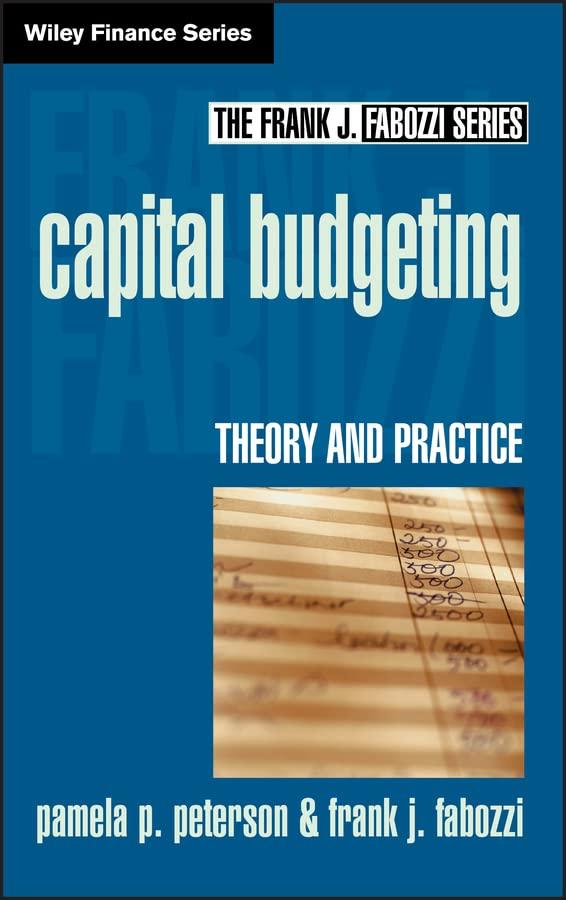Question
2. [3 pts] Compute the monthly appreciation r tt+1 = (H t+1 H t)/ H t. Extra points if you can show that the resulting
2. [3 pts] Compute the monthly appreciation r tt+1 = (H t+1 H t)/ H t. Extra points if you can show that the resulting time series is stationary.
3. [10 pts] Model the change in appreciation as an Orenstein-Uhlenbeck process (discretized version) rt+1 = r tt+1 r t = ( r t) t + t1/2 where is a normally distributed variable with mean 0 and variance 1. That is, find the parameters , and for your data set. Hints: a. Do this in excel, by adding in the Analysis Tool pack from File>Options>Add-Ins. Use OLS regression, with y= r ttt+1 r t and x = r t, and identify the unknown parameters above (, and ) from your linear regression result. Note that there is very likely serial autocorrelation. This has implications for BLUE. b. To compute , ask the regression to give you the residuals, find their standard deviation, and then divide the answer by t1/2 c. It is probably best to use t = 1 month; i.e., use monthly appreciation, your parameters estimates will be monthly. d. Note: This model is quite simplistic and not suited (in isolation) to a real- world analysis. However, the point of this project is to illustrate the techniques and financial principles involved. 4. [10 pts] Create a set of 3,000 simulations of a monthly house price for 10 years using the equation and parameters in 3 above. Assume the starting price is $800,000. Do you think 3,000 simulations is enough? Hints: a. Since you do not know the appreciation before t=1, warm up the data generating process with 1 years worth of appreciation to generate a random t=0 appreciation (you can start the warmup itself with r=0). b. You can use either VBA or simulate directly in the spreadsheet. When testing your work, you may want to use fewer Monte Carlo simulations (say 100-300), depending on your hardware. c. is a normal random draw with mean 0 and variance 1. To generate such a random draw, use the function norm.inv(rand(),0,1). Rand()
generates a uniform random number between 0 and 1 (a random probability), and the function then returns a random draw from the normal distribution with mean 0 and variance 1. d. Since every alteration to your spreadsheet will re-compute the random variable (potentially changing your results slightly), I suggest you switch off the automatic workbook calculation by going to file>options>formulas and selecting manual. To re-compute the workbook, you MUST then press control = or F9 to update formulae... dont forget this. Also, best to set back to automatic when done with project. Apples may be different. 5. [10 pts] Suppose you wanted to buy this home with 10% down, and, to lower mortgage costs, you chose to get unison.com as an equity investor to provide another 10% (for a total of 20% down and 80% mortgage). Go to unison.com to find out how Unison computes its share of appreciation. Assume transaction fees of 3.9% all in, of which 3% are lender profit. From your results in 4, compute their annualized expected return and standard deviation of returns, estimate a Sharpe ratio and the probability that Unison will lose money. Do this for the cases that the homeowner will pay back Unison after 1, 2, ...,10 years (i.e., only at yearly anniversaries). Note that technically Unison has an option to purchase a share of your home, so that their losses are limited to 100% of their initial investment. Do you see any trends over time? How does this investment compare to one in, say, a stock/option investment? 6. [10 pts] Repeat 5 for Point.com. Assume transaction fees of 3%+$1,000, where the $1,000 are costs to Point. Also note that it seems that Point caps its share at very high appreciation. Since we do not know the details, assume the cap is infinite. Further, the exact share is determined in underwriting. Assume the illustrative share on their website applies.
7. [10 pts] Graph the expected return vs investment time for Unison and Point on one plot. Repeat for the Sharpe ratio and probability of a negative return. Assume a risk-free rate of 1%. 8. [10 pts] Comment on the graphs in 7. Which is the better choice from the equity investors viewpoint? Why do you think point.com computes appreciation from a risk adjusted basis, that is smaller than the value of the home at origination, rather than the purchase price/valuation at origination? Can you adjust pricing parameters to make the homeowner indifferent to Unisons or Points pricing models?











Step by Step Solution
There are 3 Steps involved in it
Step: 1

Get Instant Access to Expert-Tailored Solutions
See step-by-step solutions with expert insights and AI powered tools for academic success
Step: 2

Step: 3

Ace Your Homework with AI
Get the answers you need in no time with our AI-driven, step-by-step assistance
Get Started


